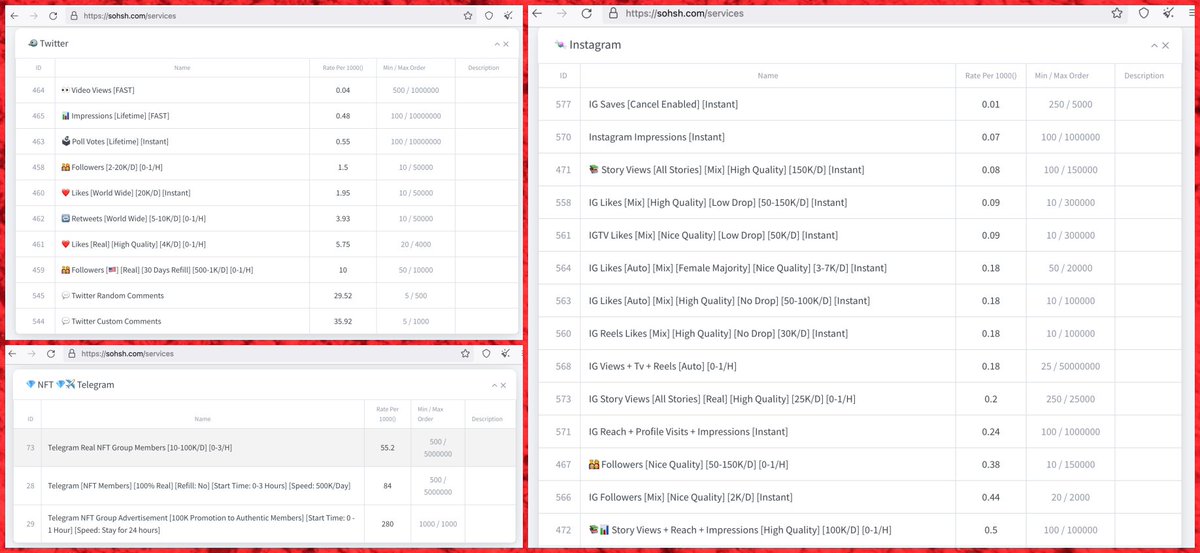Meet @nftsmmpanel, a Twitter account created in August 2022 that sells likes, followers, and retweets via a shady website. Can we find some of its merchandise? (Spoiler: yup) #SundayAstroturf
cc: @ZellaQuixote

cc: @ZellaQuixote


Sohsh(dot)com, the website promoted by @nftsmmpanel, offers a variety of services (followers, likes, etc) on a variety of social media platforms, including Twitter, Telegram and Instagram. It also offers an API (applications programming interface) to automate purchases. 



Unsurprisingly, @nftsmmpanel appears to have gotten high on its own supply. Almost all of its followers are accounts created in September 2022 with zero tweets and zero likes, presumably examples of the followers sold on its website. 

By recursively exploring the followers of the accounts followed by the mass-created accounts following @nftsmmpanel, we found 742322 accounts created between September 4th and October 2nd, 2022 that appear to be part of this fake follower network. 



Who does this fake follower network follow? Mostly cryptocurrency/NFT-themed accounts, although other types of promotional accounts turn up too, as well as BJP politician @HardeepSPuri. Almost all of the accounts in the network also follow @Twitter and @elonmusk. 

Here are follow order by creation date plots for some of the accounts that have followers from this fake follower network. The mass-created followers from the network show up as horizontal streaks.
(More on follow order by creation date plots here:
(More on follow order by creation date plots here:
https://twitter.com/conspirator0/status/1408589182944124934)

One of the more interesting accounts followed by this network is @flacc4congress. At one point it was the verified account of former Virginia congressional candidate Anthony Flaccavento, but it has been recently transformed into an NFT account.
web.archive.org/web/2022032007…


web.archive.org/web/2022032007…



Here's a Pastebin link with the account IDs of 1000 randomly selected accounts from the network, in case anyone wants to take a look. (Both Twitter developer policy and Pastebin length limits prevent sharing the full list.)
pastebin.com/XEiHP1Gy
pastebin.com/XEiHP1Gy
Finally, a big thank you to @nftsmmpanel for helpfully replying to a previous thread with a tweet advertising its services and thereby putting this fake follower network on the proverbial radar. 

Update: the @nftsmmpanel account has been suspended, and the @flacc4congress account has reacted to this thread with a block. 



• • •
Missing some Tweet in this thread? You can try to
force a refresh





























